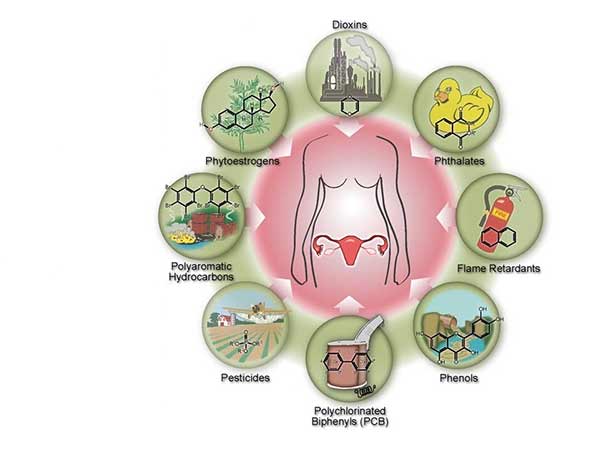Endocrine disruptors alter female reproduction throughout multiple generations
Endocrine disruptors, hormone-altering chemicals that are widespread in our environment, can shape the brain through four generations, altering offspring’s maternal behaviour, sexual development and reproduction, according to a new animal study. The results of this study were presented at the Endocrine Society’s annual meeting in New Orleans, La.
 “Endocrine disruptors are known to be a factor involved in the decrease of fertility and the increase of sexual developmental disorders. Until now, however, no studies have addressed the question of a transgenerational transmission of sexual developmental disorders in the female due to endocrine disruptors,” said David Lopez Rodriguez, MS, graduate student in the D. Anne-Simone Parent laboratory at GIGA-Neurosciences, University of Liege, Liege, Belgium.
“Endocrine disruptors are known to be a factor involved in the decrease of fertility and the increase of sexual developmental disorders. Until now, however, no studies have addressed the question of a transgenerational transmission of sexual developmental disorders in the female due to endocrine disruptors,” said David Lopez Rodriguez, MS, graduate student in the D. Anne-Simone Parent laboratory at GIGA-Neurosciences, University of Liege, Liege, Belgium.
The researchers gave 31 female rats food containing a mixture of 13 known endocrine disruptors, including plasticizers (such as bisphenol A, or BPA), pesticides, fungicides, ultraviolet filters and the preservative butylparaben (used in sunscreens and cosmetics), and the pain reliever acetaminophen. Doses of endocrine disruptors were at human exposure range and were given from two weeks before pregnancy to the end of lactation on postnatal day 21. Only this first generation of rats received the chemical mixture, but effects on sexual development and reproduction were observed throughout the next generations.
The second-generation rats were removed from their mother’s cage, and female rats were studied daily for onset of puberty and ovulatory cycle and, later, ovarian development. After reaching adulthood, the females were bred, and their maternal care was studied, including time spent licking their rat pups (third generation), behaviour known to be transmitted through generations. The same parameters were measured for the subsequent generations.
Third- and fourth-generation females had delayed puberty, abnormal cycles and abnormal ovulation. Lopez Rodriguez said that when they studied the rats’ brains, the expression and organization of genes involved in puberty and reproduction in the hypothalamus were affected. Those effects explained the changes seen in the third and fourth generations, and these data are consistent with the recent discovery that the environment can affect gene expression through changes in the organization of DNA, called epigenetic changes, he said.
“We postulate that impaired maternal behaviour induced by endocrine disruptors is one of the main causes of reproductive alterations affecting the subsequent generations,” he said. Indeed, the researchers reported that the second and third generations did show impaired maternal care in the form of reduced licking of their young and more time away from the nest.
“Our results raise concern about the potential long-term effects that manmade pollutant chemicals could have throughout generations,” Lopez Rodriguez said.
Source Newsroom: Endocrine Society


